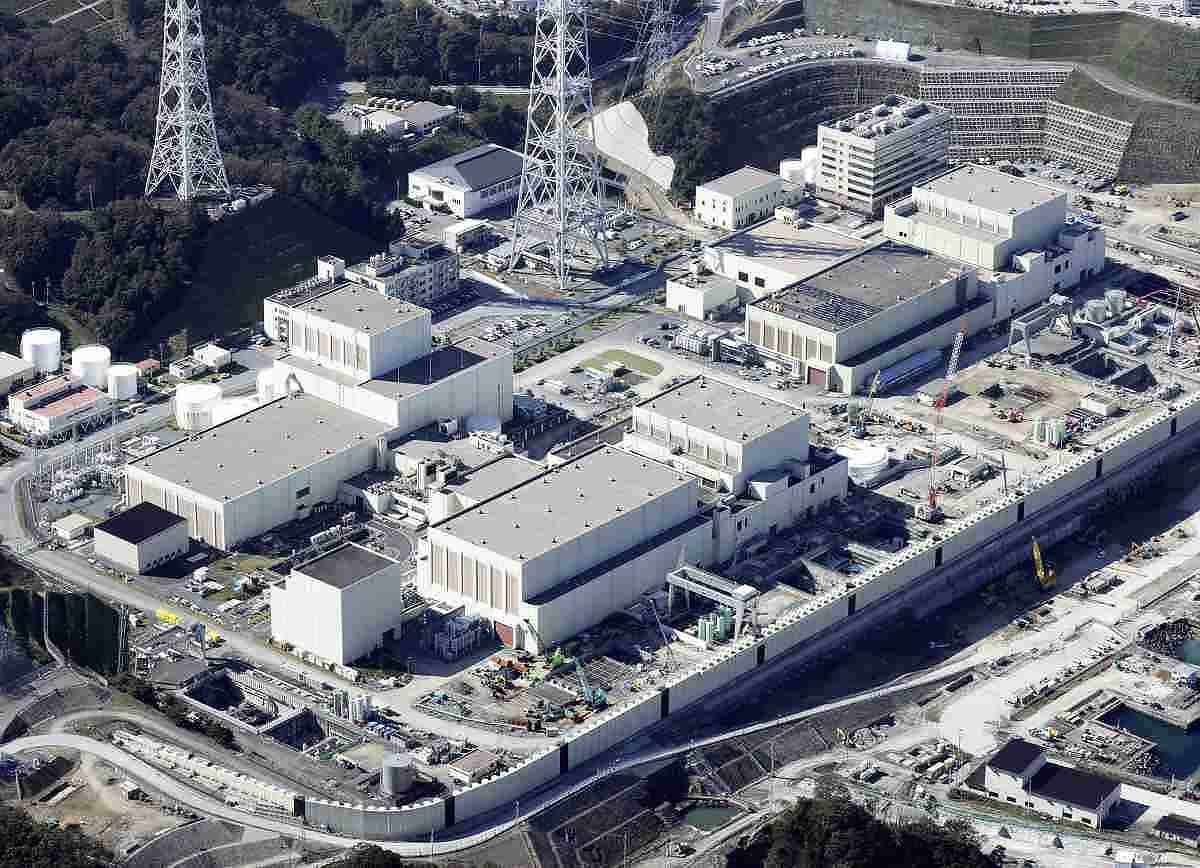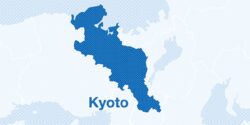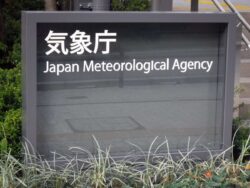
The Onagawa nuclear power plant, with the No. 2 reactor in the foreground, is seen in this aerial photo taken in 2020.
16:52 JST, October 27, 2024
Tokyo (Jiji Press)—A nuclear power reactor in northeastern Japan is set to be reactivated Tuesday, amid mixed feelings among local residents.
The No. 2 unit at Tohoku Electric Power Co.’s Onagawa nuclear power station in Miyagi Prefecture will be the first reactor going back online in eastern Japan since the March 2011 powerful earthquake and tsunami, which struck Miyagi and other northeastern prefectures.
The Onagawa No. 2 unit is a boiling water reactor, the same type as reactors at Tokyo Electric Power Company Holdings Inc.’s Fukushima No. 1 nuclear power plant, where an unprecedented triple meltdown occurred soon after the quake and tsunami due to reactor damage caused by the natural disaster. It is also the first time for a BWR to be brought back online.
Some people living around the Onagawa plant, which straddles the town of Onagawa and the city of Ishinomaki, have expressed understanding for the restart of the No. 2 reactor, while other local residents have voiced concerns about the possibility of an accident occurring at the plant after the reactivation.
The nuclear plant’s No. 1 and No. 3 units, both BWRs as well, were in operation and the No. 2 reactor was in the process of being activated when the earthquake and tsunami struck.
The plant was hit by a tsunami as high as about 13 meters, and seawater made its way into a structure next to a reactor building through a water intake channel.
Some emergency power generators at the plant stopped functioning due to damage from the tsunami. As an external power source remained workable, however, the reactors were successfully brought to a state of cold shutdown.
A gym at the power plant was used as a shelter, accommodating local residents.
After the quake and tsunami, Tohoku Electric took measures to boost the plant’s safety over 11 years at a cost of about ¥570 billion , aiming to bring it back online.
Specifically, the company raised the assumed ground acceleration from a major earthquake to 1,000 gals, increased the height of seawalls to 29 meters above sea level from 17 meters, and built walls to prevent tsunami from coming through water intake channels.
Shichio Abe, a 75-year-old resident of the town of Onagawa, evacuated to the plant after his house was washed away by the March 2011 tsunami.
“I felt safe as I was able to evacuate,” Abe recalled.
At the same time, he showed concern about the restart of the No. 2 reactor at the Onagawa nuclear plant. A severe accident like the one that happened at the Fukushima No. 1 nuclear power station in Fukushima Prefecture, next to Miyagi, may occur at the Onagawa plant after the restart, Abe said.
“There is no absolute safety because it is operated by humans,” Abe said.
A woman in her 70s in the town of Onagawa said that “it’s better not to have a nuclear plant” because the issue regarding the selection of final disposal sites for radioactive waste from nuclear plants has not been cleared yet.
But she also said, “We have no choice but to accept (the restart of the Onagawa No. 2 reactor) because there also are benefits (from the restart).”
A man in his 70s said: “I’m not opposed to nuclear power generation. I want nuclear plants to be operated (safely) without accidents or other problems.”
In September 2020, the Onagawa municipal assembly voiced its tolerance of a reactor to be restarted, accepting a request from local groups including a commerce and industry chamber.
“It’s true that residents are starting to think about coexistence with the nuclear plant,” Ryoichi Sato, 79, head of the Onagawa assembly, said.
Noting that candidates opposing nuclear power generation failed to win many votes in the October 2023 election for the assembly, Sato said: “Because the (Onagawa plant) already exists, we need to get along with it. But we also need to call for making sure that the plant is operated safely.”
Commercial operations started in June 1984 for the Onagawa No. 1 reactor, in July 1995 for the No. 2 reactor and in January 2002 for the No. 3 reactor.
In February 2020, the Nuclear Regulation Authority concluded that the No. 2 reactor met the new nuclear safety standards created after the March 2011 accident at the Fukushima No. 1 power plant. Tohoku Electric finished work to boost the reactor’s safety in May this year.
The company terminated the operations of the No. 1 reactor in December 2018 and aims to complete the decommissioning of the reactor by fiscal 2053.
"Society" POPULAR ARTICLE
-

M4.9 Earthquake Hits Tokyo, Neighboring Prefectures
-

Israeli Tourists Refused Accommodation at Hotel in Japan’s Nagano Pref., Prompting Protest by Israeli Embassy and Probe by Prefecture
-

M7.5 Earthquake Hits Northern Japan; Tsunami Waves Observed in Hokkaido, Aomori and Iwate Prefectures
-

Tsukiji Market Urges Tourists to Avoid Visiting in Year-End
-

High School in Kyoto Says Students Shoplifted during Recent School Trip to Bali, Indonesia
JN ACCESS RANKING
-

Tokyo Economic Security Forum to Hold Inaugural Meeting Amid Tense Global Environment
-

Keidanren Chairman Yoshinobu Tsutsui Visits Kashiwazaki-Kariwa Nuclear Power Plant; Inspects New Emergency Safety System
-

Imports of Rare Earths from China Facing Delays, May Be Caused by Deterioration of Japan-China Relations
-

University of Tokyo Professor Discusses Japanese Economic Security in Interview Ahead of Forum
-

Japan Pulls out of Vietnam Nuclear Project, Complicating Hanoi’s Power Plans























